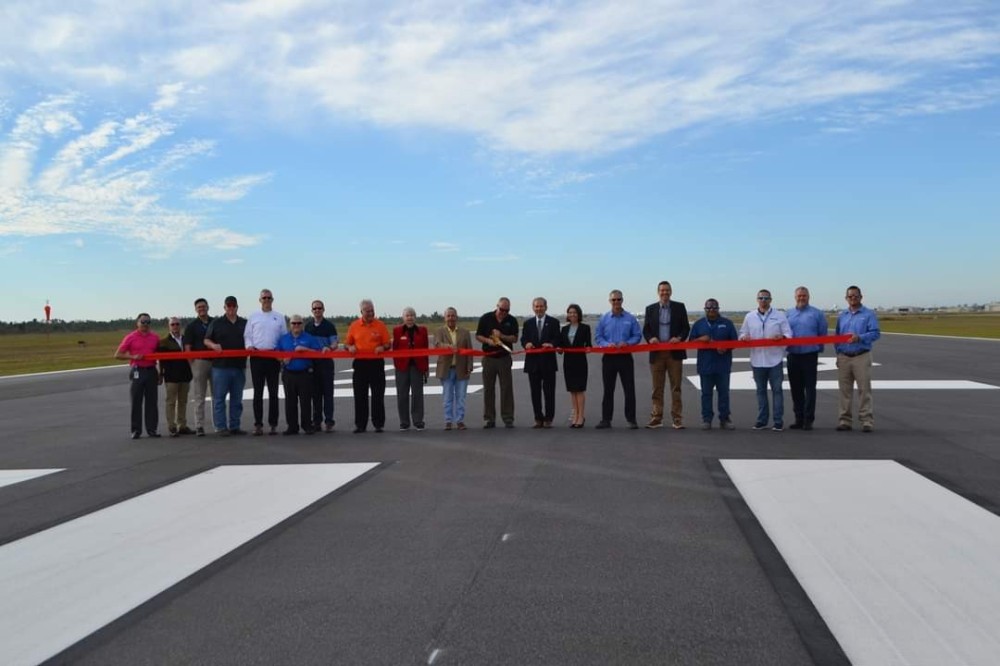PGD’s Runway 4-22 Reopens Primary Runway Opens After Year-Long Reconstruction Project
January 17th, 2023

Punta Gorda, FL (January 13, 2023) – The Charlotte County Airport Authority (CCAA) reopened Runway 4-22 on Friday after a year-long reconstruction and rehabilitation project. Runway 4-22 is the preferred runway for commercial airlines as it is the longest runway at 7,193 feet. Runway 4 is also best oriented for prevailing winds and instrument approach procedures.
Area residents may notice the commercial airline flight patterns have returned to 2021 levels when Runway 4-22 was used more than 90% of the time for takeoffs and landings. However, Runway 15-33, which was extended to 6,281 feet in 2020 to handle commercial service, will continue to be used by commercial airlines at a lower frequency than in 2022.
“We want to thank the airport staff, contractors and agencies that all collaborated to make this happen during a challenging year,” said CCAA Chair Robert D. Hancik. “This rehabilitation project is integral to efficient air transportation and anticipated economic development needs for the decades ahead.”
In an effort to help local residents understand the routes of airliners taking off and landing on each runway, CCAA has worked with engineering consultant AECOM to develop a set of flight corridor maps depicting the FAA-approved routes that pilots most often take. The flight corridor maps were developed using data points from actual takeoffs in landings during the two busiest months of 2021, December and March, when both Runway 15-33 and Runway 4-22 were open. Residents can view the maps by clicking on the “FLIGHT CORRIDOR MAPS” button at the top of www.FlyPGD.com.
Runway 4-22 was constructed in the 1940s and has endured decades of takeoffs and landings, so the center portion of the runway was removed and reconstructed along its entire length. The remaining portion of the runway was milled and resurfaced. Both portions of the runway were paved with asphalt, grooved and painted with runway markings. New blast pads were also constructed at each end of the runway, and new energy-efficient lighting was installed.
The $15-million project was designed by Kimley-Horn and completed by Wright Construction Group. The runway project was entirely funded by the Federal Aviation Administration’s (FAA) Airport Improvement Program (AIP), which funds airport infrastructure projects such as runways, taxiways, airfield signage, lighting, and markings, and additional discretionary funding supplemented by the FAA. The AIP fund draws support from aviation user fees, passenger tickets and aircraft fuel taxes. Airports are entitled to a certain amount of AIP funding each year based on passenger volume.
Runway 4-22’s rehabilitation is essential to meet the continued demands of commercial air service, keep runway pavements from rapidly deteriorating and meet standards for pavement conditions, safety and usability.

